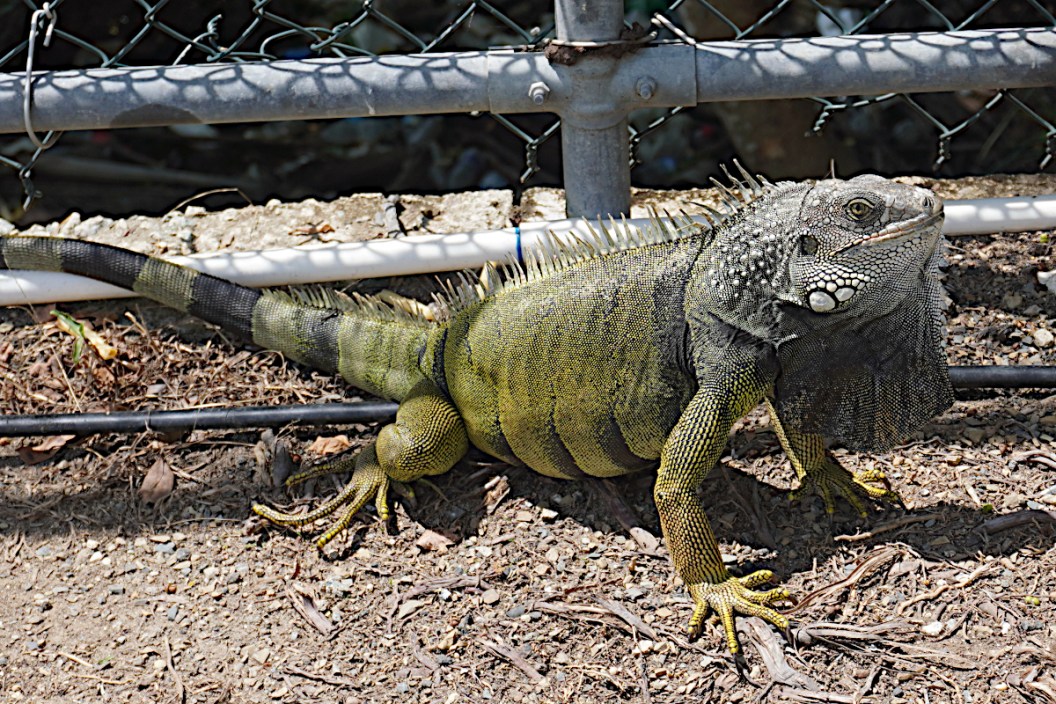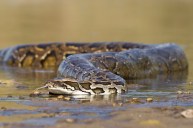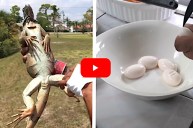Florida's invasive iguana population opens some unique hunting opportunities.
It is not secret that Florida probably deals with more invasive species problems than anywhere else in North America. One problematic species that is quickly becoming more noticeable to Floridians is the invasive iguana.
Originally introduced to the state via the exotic pet trade, there are at least three species of invasive iguana that have become common in South Florida. The big lizards took well to the climate and general lack of natural predators. The Florida iguana problem is a threat to native ecosystems, and even human health since the animals can spread diseases like salmonella. They also create headaches for homeowners since the reptiles dig extensive burrows that can undermine structural integrity.
However, through the invasion of the iguana, a new hobby was born. Hunting iguanas is now a common, and sometimes even lucrative pastime for many Florida residents. Today we will give you the lowdown on this unique year-round activity that would be perfect for training new hunters in safety.
Where are iguanas found in Florida? And how many are there?
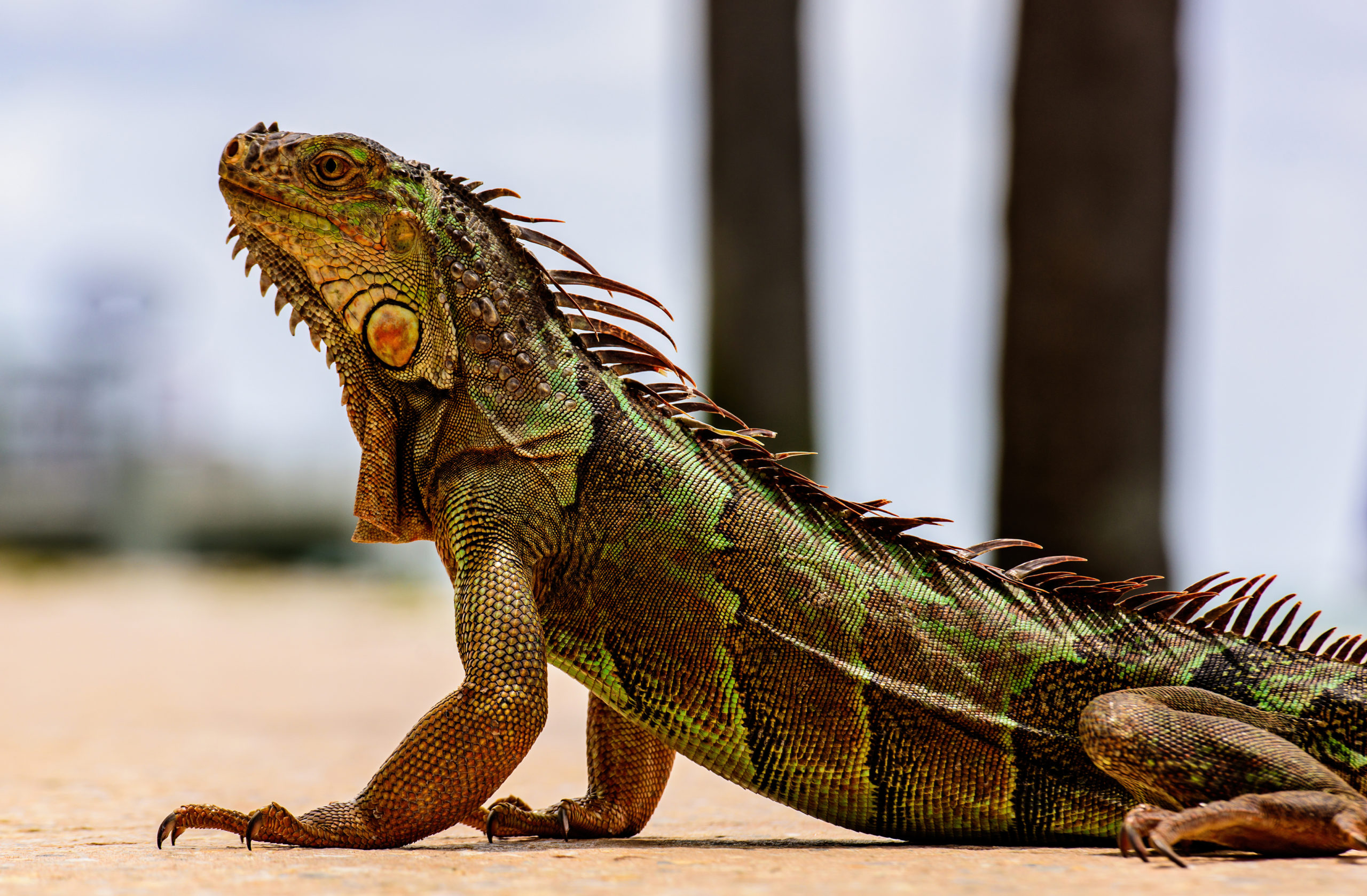
The Florida Fish and Wildlife Conservation Commission believes that iguanas first started to take foothold in the state back in the 1960s. According to the FWC website they are distributed mostly in the southern part of the state. Confirmed breeding populations of iguanas have been confirmed in several locations including the Atlantic coast. More specifically, Miami-Dade, Monroe, Palm Beach, Martin, and Broward counties.
Unfortunately, they are also on the Gulf Side, mostly in Collier and Lee Counites. The FWC is still investigating reports of them in more northern parts of the state. According to the University of Florida, most of the problem animals are common green iguanas which are native to Brazil, parts of Central America, and Mexico. These lizards also have a large invasive foothold in the Caribbean, especially in Puerto Rico, where they have thrived.
According to the University of Florida, the state also has established populations of Mexican spiny-tailed iguanas and black spiny tailed iguanas. Although it seems the green iguana populations are the dominant of the three. As for how many there are, the FWC and researchers can only make guesses at this point. Between 2005 and 2019, researchers documented more than 3,000 sightings, so it seems safe to assume the population is likely in the thousands. Especially since female iguanas can lay more than 70 eggs a year.
Is iguana hunting legal?
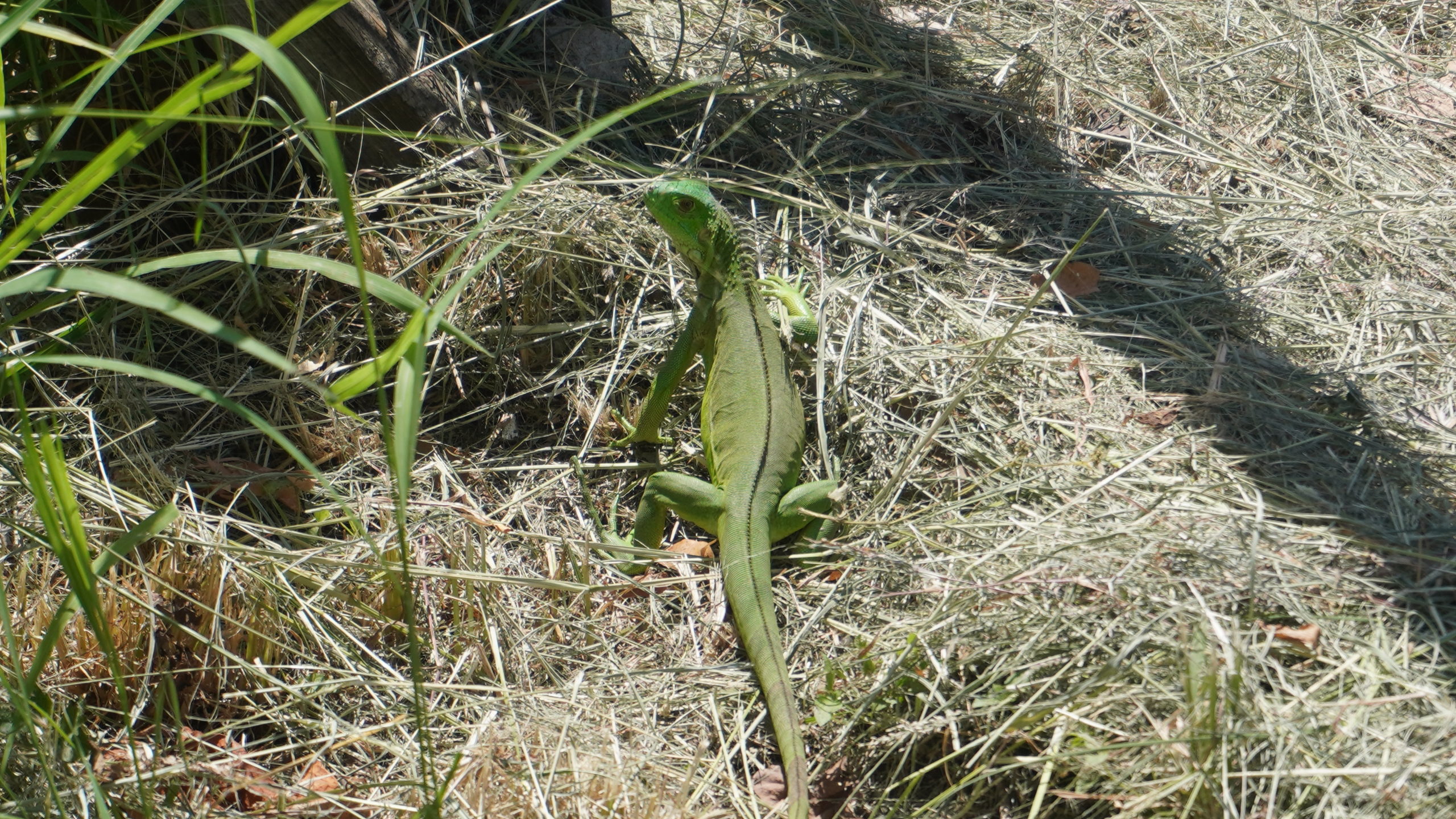
Travis Smola
The FWC has increasingly cracked down on iguanas as their populations have expanded. In 2021, they introduced new guidelines that classify them as a prohibited species. This means Florida residents are no longer allowed to have them as pets. The FWC says iguanas are not protected. The only exception is the usual anti-cruelty laws. This means it is open season for the big lizards all year-round.
Florida's guidelines specifically state iguanas can be "humanely killed on private property year-round with landowner permission." They only ask that you do it safely and humanely. Prospective iguana hunters can also take the big lizards from public lands managed by the FWC without a permit. They only ask that you not transport live animals. They must be destroyed before moving them.
How do I go iguana hunting?
The most common way to hunt iguanas is to use high powered air rifles. The quickest, and probably most humane way to kill iguanas is with a shot to the head. Many hunters aim for the eye or just behind it to quickly drop the animals where they stand. It is worth noting that the airguns used for iguana hunting are not just something cheap and off the rack at Walmart. While most seasoned iguana hunters agree you can kill one with a .177 caliber airgun, it seems a .22 or .25 caliber that gives superior muzzle velocities of 800 feet per second or greater may be a better option. You might also consider a quality optic because some iguanas, especially the juveniles, present a small target.
One common method of targeting the reptiles is to float down rivers or canals slowly and then pick them off from the banks or the trees. Since the practice of hunting them has become popular, many outfitters have popped up that primarily use this technique. Most of them will even supply the pellet guns needed for the hunt. All you do is show up ready to hunt.
The great thing about hunting with pellet guns is ammo is plentiful, cheap, and the recoil is near zero. An invasive iguana hunt is a great option for introducing new hunters because you can work on basic hunter safety concepts like trigger discipline, proper backstops, and proper shot placement. The other nice thing is that many iguana hunts are action-packed, which will likely hold a new hunter's attention better than sitting for hours in a deer blind.
There is also the option of trying to capture them alive. Some trappers use live animal traps typically reserved for pests like raccoons and possums. Just make sure you cover it with a tarp or burlap to keep the animal from struggling to escape. The FWC recommends using papaya, mangos, or melon as bait. Just remember you must check the trap every 24 hours for it to be legal. Some hunters also use snares to catch them.
Sometimes, if it is cold enough, the iguanas will be too lethargic to run away, and you can simply pick them up. One thing to keep in mind with live captures is the animals must be destroyed. Florida prohibits moving the animals alive to stop the spread of them.
Another thing we should note is safety. Because iguanas often populate urban areas, this is where many people go after them. While the FWC has no problems with you shooting them, they also recommend caution after a wayward pellet meant for an iguana hit a man in Boca Raton in 2019. It prompted a statement from the FWC.
"If you are not capable of safely removing iguanas from your property, please seek assistance from professionals who do this for a living," FWC commissioner Rodney Barreto said in a statement after the accident.
Do people eat iguanas? And what do they taste like?
Yes, some people do indeed eat iguanas. In fact, in some parts of the world they are a favorite of the locals. Some people even like to eat the eggs of these big lizards. Keep in mind these reptiles can carry some diseases, so you will want to cook them thoroughly. However, it seems the only limits to how you can cook an iguana is your imagination. It seems the simplest way to cook them is to simply fry them.
Speaking of deep frying, you may hear iguanas called "chicken of the trees" in some places. That is because it is what most people compare the taste of an iguana to. For anyone who is still a little wary of eating a large reptile like this, you can probably find someone who will take the meat off your hands.
Truly, we are still at the early days of iguana hunting becoming popular. Unless the local alligator population and human hunters start making a dent in the numbers, it is likely to become more popular as time goes on. At the very least it is something different and fun for hunters to do in the offseason while waiting for the more popular hunting seasons to start!
Products featured on Wide Open Spaces are independently selected by our editors. However, when you buy something through our links, we may earn a commission.
For more outdoor content from Travis Smola, be sure to follow him on Twitter and check out his Geocaching and Outdoors with Travis YouTube channels.
NEXT: THE AXIS DEER AND HOW THEY'RE IMPACTING PARTS OF THE UNITED STATES
WATCH
